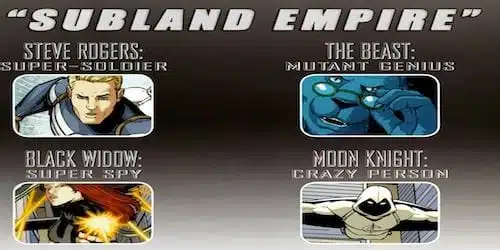
It was in a 2003 interview with Wizard that legendary comics creator Alan Moore ventured misgivings about then current TV show, 24. “When I first saw it, I thought it was a comedy”, Moore stated. For Moore, the ridiculousness of Elisha Cuthbert’s character being kidnapped so many times in the same 24-hour period was just one of several reasons to not take the show too seriously.
It’s an almost throwaway comment, but it highlights a key principle in Moore’s creative process. Moore thinks in terms of core ideas, a big vision for each story. What if Jack the Ripper was merely the servant of a monstrous idea that wanted to manifest in the world? From Hell follows as an essay on Victorian culture as much anything else. Or what if superheroes just accelerated the political frisson of the Cold War, would things go hot? Watchmen is a tome filled with Moore’s meditations.
In conversation, David Wohl, co-creator of Witchblade and now EIC at Radical Comics, identifies a different character to the creative process of Warren Ellis. “He’s just able to find the heart of truth in everything he writes. He’s able to re-shape genre and it do what he wants, in a way almost no one else can”. Wohl’s appreciation clues us in to a deep understanding of Ellis’ strengths as a writer not only in the medium, but in the business of comics.
Alan Moore writes unique, masterful, visionary statements. Each of his works is a manifesto. But Moore’s creativity is focused on individuated works. His writing of company-owned properties like Swamp Thing or WildC.A.T.S. is of far less a volume than his creator-owned writing. Ellis shows an equal facility in writing creator-owned and company-owned properties. For every Anna Mercury or Doktor Sleepless or Planetary, there is an Astonishing X-Men or Hellblazer or NewUniversal. What’s more, Ellis is so completely skilled in finding “the heart of truth”, that Ellis’ Hellblazer is more recognizably Hellblazer, than it is Ellis ruminating on a shortlist of themes close to his heart.
Is it any surprise then, that Ellis writing Secret Avengers refocuses the book around genre (hard-science espionage thriller) in a way that taps an essential truth of both the characters and of the book itself? Secret Avengers #16, “Subland Empire” is a thrill-ride of wall-to-wall action. The far more streamlined squad only opens the possibilities a keener storytelling. “Subland Empire’s” blistering action only introduces the characters situations that offer readers a unique insight into the characters themselves.
Both the tech that “Mutant Genius” Beast both quartermasters for the squad, and the tech he finds himself needing disable later in the issue show how his primary “weapon” is his intellect. “Super-Soldier” Steve Rogers’ leadership under fire and his ability to change up tactics at a moment’s notice paint a portrait of a soldier no longer burdened by the weight of iconic status. For Rogers, the work of Secret Avengers is very different in tone than his wielding the shield as Captain America. Ellis’ characterization of “Super Spy” Black Widow as the “Soviet Union Girl” in love with classic American iconography (think of how popular culture geared around products seems to have stalled in Cuba) is so spot on it’s poignant. And “Crazy Person” Moon Knight’s silent, lunatic relishing in dealing out violence to large swathes of bad guys captures in an instant the tragic nature of the character.
Secret Avengers comes with the highest appreciation that can be lauded on popular culture. It’s Coca Cola; drink it and you’ll be refreshed but in a few minutes your taste-buds are craving more. It’s Phil Spector’s infamous “Wall of Sound” where huge, operatic-scale layers of sound are built into essentially throwaway symphonies. “Subland Empire’s” storyline of the Secret Avengers tangling with science criminals in a subterranean city beneath Cincinnati might be forgotten in due course. But the clear, crisp characterization that the story affords offers the deepest levels of emotional engagement. The characters stand out like seldom before.
And that makes all the difference.
